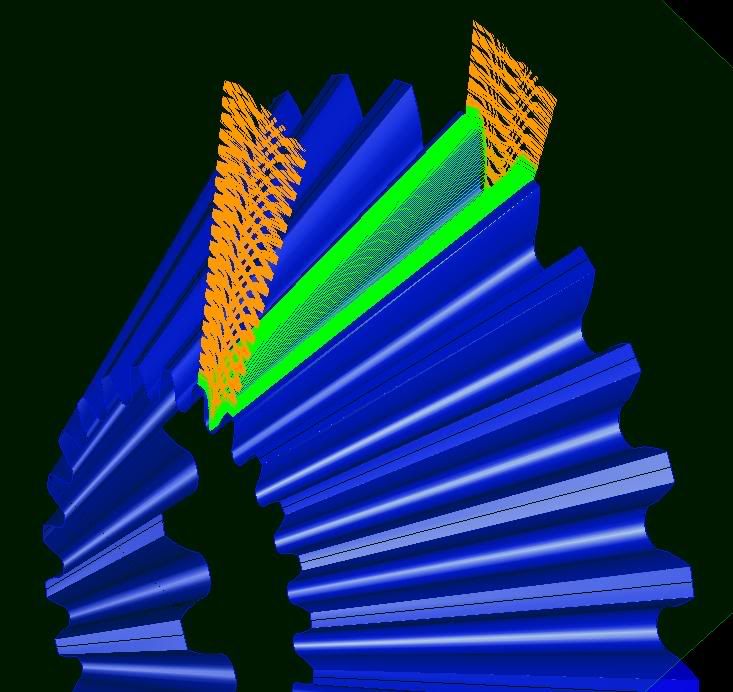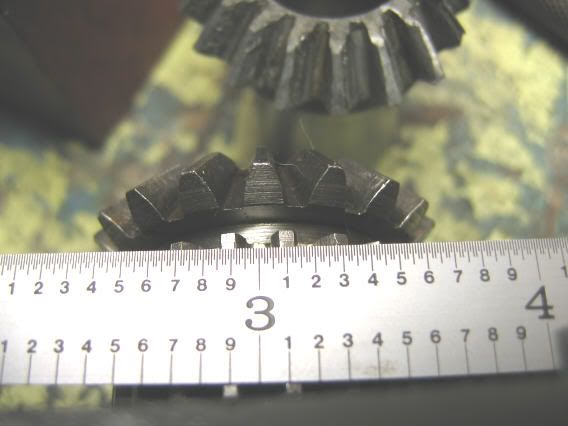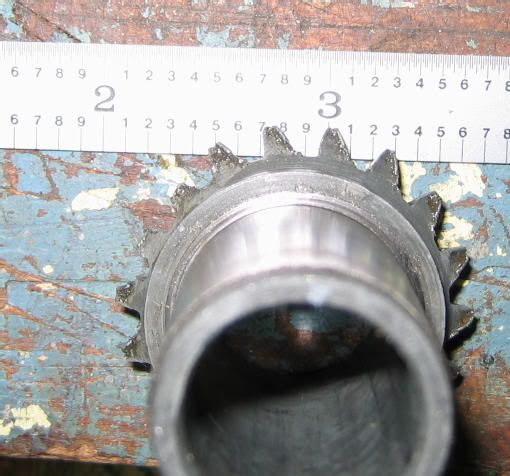OK, I have what appears to be a stub tooth 45 deg bevel gear to cut. (yes I COULD buy one, for $117, but I'm not going to)
It looks like this

It goes in the hand-cranked table-raising setup of a drill press. it turns a 3/4-8 "lead screw" that raises and lowers the table. Low speed hand cranking means noise etc isn't an problem, but locking, or trouble with loads or pressure would be an issue.
Various stats.... in case I am FOS about the gear.
Circular pitch measures out to about 0.260
Whole depth of tooth measures a bit over 0.160
Back cone radius is about 1.13", and its an 18 tooth gear, 45 deg bevel.
Now, I know there are cutters for stub tooth form. I have some, in huge sizes that I have no use for (came with other useful stuff).
But, while I can get normal cutters, I have no source for stub tooth form cutters. Nor would I likely ever have another use for this one, unless I want to make atlas gears (It's a big Clausing DP, and the gear is actually an Atlas lathe part from a 10F).
I already have adjustments to make to cut a bevel gear anyway. I have to swing the gear slightly each way around the cone apex to generate an approximate correct shape.
That being the case, is there a way to use an appropriate pitch and cutter number in the standard full form series to approximate this stub form?
I would assume there is. If I had a rack of cutters for various DP, I would go thru them until I found a suitable-looking profile, and go ahead.
But, I need to figure out which to buy, as I have no suitable ones here. Is there any sensible way to decide what cutter number and DP I would need, somewhat sight-unseen?
If I were doing another one on the shaper, I'd grind out the form and have at it, but I'm not going to try the shaper on this gear. Been there, have a mill now, and the stock I have for it is 4140, anyhow. The little 7" Atlas shaper would not like that, and I'd likely have to re-sharpen a couple times....wotta pain.
Per tables in Colvin and Stanley, if it were not a stub form, a #5 cutter would be the one.
But, while the Colvin and Stanley book is normally pretty helpful, on the standard cutter for stub form aspect of the issue they are not.
BTW, the pic shows a zamak part, but Clausing had the sense to at least make teh mating part steel, so I can use steel without a problem for the replacement. In fact that is what Clausing would sell for $117 plus shipping.
It looks like this

It goes in the hand-cranked table-raising setup of a drill press. it turns a 3/4-8 "lead screw" that raises and lowers the table. Low speed hand cranking means noise etc isn't an problem, but locking, or trouble with loads or pressure would be an issue.
Various stats.... in case I am FOS about the gear.
Circular pitch measures out to about 0.260
Whole depth of tooth measures a bit over 0.160
Back cone radius is about 1.13", and its an 18 tooth gear, 45 deg bevel.
Now, I know there are cutters for stub tooth form. I have some, in huge sizes that I have no use for (came with other useful stuff).
But, while I can get normal cutters, I have no source for stub tooth form cutters. Nor would I likely ever have another use for this one, unless I want to make atlas gears (It's a big Clausing DP, and the gear is actually an Atlas lathe part from a 10F).
I already have adjustments to make to cut a bevel gear anyway. I have to swing the gear slightly each way around the cone apex to generate an approximate correct shape.
That being the case, is there a way to use an appropriate pitch and cutter number in the standard full form series to approximate this stub form?
I would assume there is. If I had a rack of cutters for various DP, I would go thru them until I found a suitable-looking profile, and go ahead.
But, I need to figure out which to buy, as I have no suitable ones here. Is there any sensible way to decide what cutter number and DP I would need, somewhat sight-unseen?
If I were doing another one on the shaper, I'd grind out the form and have at it, but I'm not going to try the shaper on this gear. Been there, have a mill now, and the stock I have for it is 4140, anyhow. The little 7" Atlas shaper would not like that, and I'd likely have to re-sharpen a couple times....wotta pain.
Per tables in Colvin and Stanley, if it were not a stub form, a #5 cutter would be the one.
But, while the Colvin and Stanley book is normally pretty helpful, on the standard cutter for stub form aspect of the issue they are not.
BTW, the pic shows a zamak part, but Clausing had the sense to at least make teh mating part steel, so I can use steel without a problem for the replacement. In fact that is what Clausing would sell for $117 plus shipping.





